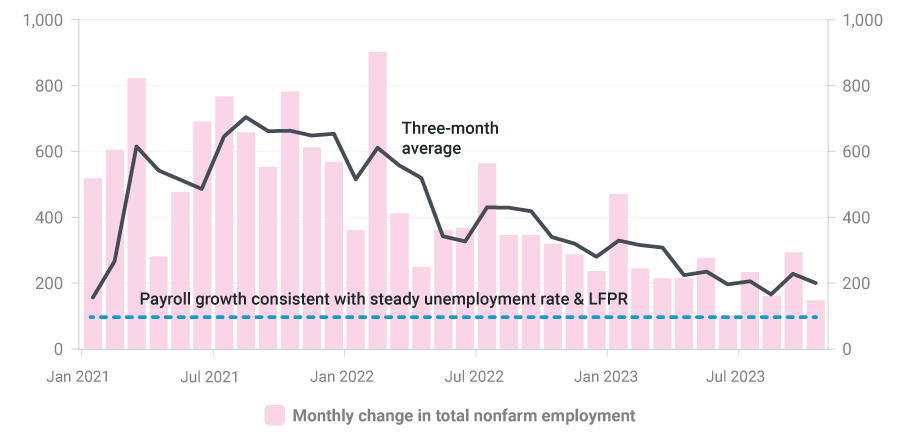With less than two months to go in 2023, this year has on the whole been very kind to investors, even as higher interest rates and cost of living pressures cause challenges in the broader economy.
In this week’s update, we touch on returns across investment markets this year, the risks that continue to build, and how that may impact asset markets as we head toward the new year.
We also look at the many factors that support investment into pink diamonds, from their tangibility and beauty, to the diversification benefits they bring a portfolio, and their and inflation-hedging qualities.
Risks continue to build
Market historians are likely to look back on the year 2023 and note that it has been relatively friendly to investors. Stock markets worldwide have increased, for example with the S&P 500 in the United States up +14% in the year to November 3rd, while more speculative assets such as cryptocurrencies have also spiked.
Housing values across the developed world have also surged, despite rising interest rates, including in Australia, where the latest data suggests that, nationwide, home values are up 5% for the year so far.
While these rising prices are good news for investors, the outlook for most assets going forward is much more problematic.
Part of this is simply to do with starting valuations, with the US equity market for example currently priced at 30 times earnings. This means that based on current company share prices, and current company earnings, it will take 30 years (i.e. until the 2050’s) for companies to make the money that is equivalent to what investors are paying for the stock today.
That means that based on current company share prices, and current company earnings, it will take 30 years (i.e. until the 2050s) for companies to make the money that is equivalent to what investors are paying for the stock today.
By historical standards, this is an incredibly high number. Previous periods that the market has traded at 30 times earnings include the era just before the Global Financial Crisis (GFC) hit, as well as the commencement of the Great Depression almost a hundred years ago. Investors are paying a very high price to be stock owners.
Inflation also remains a key risk, with the US Federal Reserve themselves admitting that they still have “a long way to go” in battling inflation. Australia is in a similar position, with many commentators now thinking that the RBA will follow through with more interest rate hikes after raising rates earlier in the week on Melbourne Cup Day, as they continue to try and get on top of cost of living pressures.
Another area where the slowdown in economic activity is becoming more apparent is on the employment front, where job growth has fallen markedly. This can be seen in the chart below, published by the Council of Economic Advisers in the aftermath of just released employment data for end October in the United States.
The chart shows that employment growth has barely averaged 200,000 new jobs a month over the past quarter, which is a huge reduction from the rate of job creation we were seeing a couple of years ago.
Job growth over the last three months averaged 204,000
Clik here to view.

Source: Bureau of Labor Statistsics, CEA calculations as of November 3, 2023 at 8.30am.
While it was to be expected that job growth would be moderate to some degree, this level of slowdown is worrying, with the unemployment rate now close to going above 4%, after hitting multi-decade lows in the last year.
It’s a clear recession warning sign, as ultra-low unemployment has historically coincided with a slowdown in the economy and the potential beginning of a recession.
So far, it looks like history is repeating itself in this regard, and this is set to pose a huge challenge for investors in 2024 and beyond, given broader financial market conditions and rising geopolitical risks.
Pink diamonds: Tangible and trusted
Pink diamonds have also continued to rise in value, even if the pace of price growth has moderated from the explosive price spike we saw in the 18-month to 2-year window after the Argyle mine closed in late 2020.
Moving forward, while it will take some time for the pink diamond market to get through its current liquidity hiccup (where prices are strong, but turnover has eased), the fundamentals supporting this asset class continue to grow stronger.
Consider the following factors:
- The supply outlook is unchanged, with production of new pink diamonds almost at a standstill since the Argyle Mine was closed.
- Their tangibility and beauty are unquestioned and are accessible to most investors. All commodities are tangible, but most aren’t accessible or valued for their beauty, and most are also incredibly volatile. Pink diamonds are unique in that they have none of those negative attributes.
- They remain great inflation hedges, given their scarcity value.
- They remain trusted diversification assets, in that given the lack of leverage in the pink diamond market, they are largely immune to the economic cycle, and help cushion portfolios in periods when equity markets and other mainstream assets are volatile.
The ongoing support that the pink diamond market also gets from jewellery buyers, collectors and high net worth investors worldwide is another area of support for this asset class, which is why the outlook on a medium to long-term basis, remains so positive.
All this combines to suggest that pink diamonds could be a great asset for investors to consider adding to their portfolio as we approach 2024, especially given the risks and uncertainty emerging in the economy and in other asset markets.
As always, we hope you’ve enjoyed this week’s edition of “In the Loupe” and we look forward to any questions or comments you may have.
The post The tangibility of pink diamonds appeared first on Australian Diamond Portfolio.